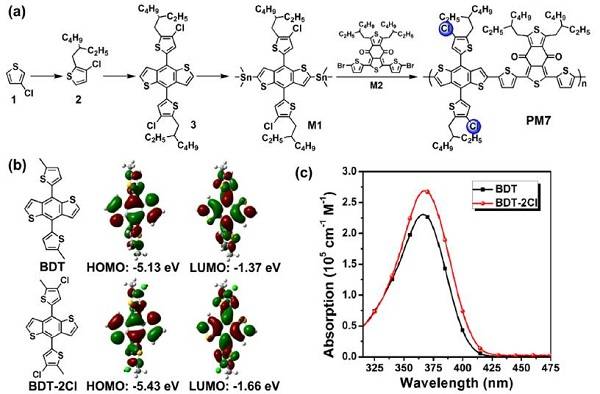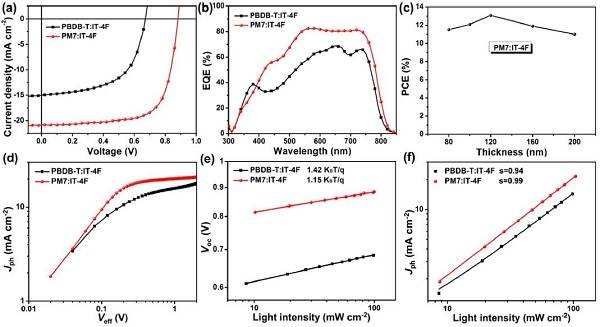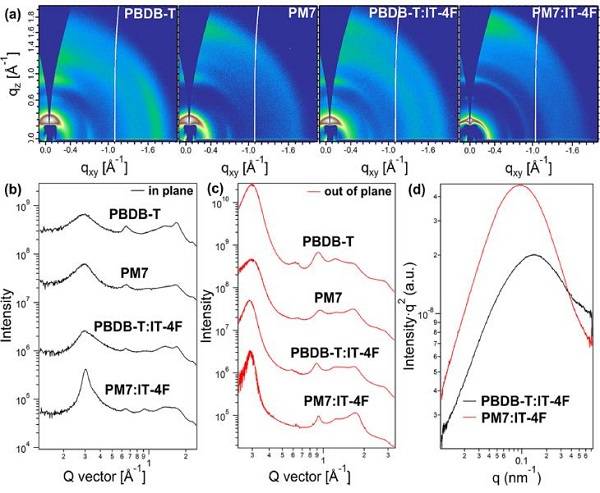ã€introduction】
As an emerging clean energy technology, polymer solar cells (PSCs) have attracted wide attention in recent years because of their advantages of translucency, flexibility, and large area preparation. Over the past three years, n-type organic semiconductors (n-OSs) have flourished as high-performance PSCs as non-fullerene (NF) receptors because of the n-type organic semiconductors compared to conventional fullerene derivatives. The invention has the advantages of wide source of precursors, low preparation cost, adjustable absorption and energy levels, small energy loss, and high stability of morphology. To date, the power conversion efficiencies (PCEs) of single-junction NF-PSCs have reached 11–13%. When blended with a wide bandgap polymer, IT-4F-based PSCs showed up to 13.1% PCE. Since well-matched polymer donors and n-OS receptors play a crucial role in obtaining high-efficiency PSCs, a wide range of synthetic changes such as atomic substitutions, side-chain modifications, and introduction of aromatic fused rings are used. Optimize high performance polymer donors. Among them, the substitution of atoms, especially fluorine (F) atoms, has attracted widespread attention and has been widely used in molecular design.
[Introduction]
Recently, Prof. Zhang Maojie (Corresponding Author) from Suzhou University issued a document entitled "Chlorine substituted 2D-conjugated polymer for high-performance polymer solar cells with 13.1% efficiency via toluene processing" in NanoEnergy. The researchers designed and synthesized a new D-A type two-dimensional conjugated polymer PM7 containing thiophene benzodithiophene (BDT-2Cl) donor units and benzodithiophene-4,8- Diketone receptor units. PM7 has a lower HOMO level, higher absorption coefficient, stronger crystallinity and higher carrier mobility than the chlorine-free substituted control polymer PBDB-T. In addition, photovoltaic devices using PM7 as the donor and IT-4F as the acceptor when using the non-halogen solvent toluene as the solvent obtain a 0.88V high open circuit voltage and a short circuit current density of 20.9 mA·cm-2. With a fill factor (FF) of 71.1%, a 13.1% energy conversion efficiency (PCE) was achieved. Under the same conditions, the PSC of the PBDB-T:IT-4F system showed only a low PCE of 5.8% at a low Voc of 0.67V. 13.1% of PCE is one of the highest energy conversion efficiency of non-halogen solvents reported so far. These results indicate that chlorine substitution is a simple and effective strategy for designing high performance conjugated polymer photovoltaic materials.
[Introduction]
figure 1. Synthesis diagram

(a) PM7 synthetic route;
(b) The HOMO and LUMO electron distributions and energy levels calculated from the B3LYP/6–31G*(d,p) DFT;
(c) Absorption spectra of monomers in a solution of 1 x 10–5 M toluene;
figure 2. Molecular energy level structure

(a) Molecular Structure
(b) Absorption spectra of polymer donors and non-fullerene receptor IT-4F;
(c) Molecular energy level diagrams of polymer donors and non-fullerene receptor IT-4F;
image 3. Photovoltaic performance test

(a) J-V curve under irradiation of a 5G light source (100 mWcm-2);
(b) EQE curves of PM7: PSCs prepared from IT-4F blends;
(c) PM7: trend diagram of the relationship between the thickness of the active layer of PSCs prepared by IT-4F blending and PCE;
(d) JphvsVeff;
(e) Variation of Voc with light intensity in PSCs prepared from PM7: IT-4F blends;
(f) PM7: Changes in light intensity of Jph in PSCs prepared from IT-4F blends;
Figure 4. Two-dimensional GIWAXS characterization

(a) Two-dimensional GWIax profiles of pure polymers and related blend membranes and corresponding (b) IP and (c) OOP cuts;
(d) RSoXS scattering distribution of the blend membrane.
ã€to sum up】
The researchers designed and synthesized polymer PM7 based on a new chlorine-containing BDT-2Cl donor unit and used it as a donor for non-fullerene organic solar cells. Unlike conventional chlorinated polymers with a chlorine substituent on the molecular backbone, PM7 chlorination on the conjugated side chain of the polymer helps to reduce the steric hindrance effect of Cl atoms on the polymer backbone. Compared with PBDB-T, PM7 has lower HOMO level, higher absorption coefficient, stronger crystallinity and higher carrier mobility. In addition, a photovoltaic device based on toluene of PM7:IT-4F using toluene as the solvent has a VOC of 0.88 V, a Jsc of 20.9 mA·cm−2, and an FF of 71.1%, and the PCE is as high as 13.1%. The PSC based on PBDB-T:IT-4F only received 5.3% of PCE. 13.1% of PCE is one of the highest values ​​of the non-halogen solvent photovoltaic devices reported so far. The results show that chlorine is a simple, inexpensive and effective strategy for designing high performance polymer photovoltaic materials.
Escutcheon lever lock door handle,door hardware,door lock hardware
Wenzhou Shenghong Metal Products Co.,Ltd , https://www.shenghonglock.com